
Founded in 1982 by New York photographer Fred H. Berger, Propaganda magazine was, at the time of its final issue in 2002, the longest running and most popular chronicle of gothic subculture in the United States. From its infancy as a punk fanzine, it grew in scope, covering the esoteric obsessions of its “Propaganda Minister”—post-punk, death rock, fetish fashion, body modification, BDSM, vampirism, horror literature, androgyny, and paganism were all tossed into its smoking cauldron. Over time, these disparate influences became codified into what we know today as “goth” culture. Never billing itself as a “goth” zine per-se, Propaganda had as much to do with developing the aesthetic of goth as any black-clad scare-band you’d possibly care to name.
Nancy Kilpatrick’s The Goth Bible: A Compendium for the Darkly Inclined called Propaganda “the only subculture publication known to just about every goth on the planet” for good reason. Its importance to that scene can’t be overstated. In fact, you could say that goth had to happen with Propaganda acting as a two-way mirror, both projecting and reflecting the dark music, fashion, art, and literature of its post-Cold War audience.
I didn’t discover Propaganda until the early ‘90s, when it seemed to be everywhere. I remember, at the time, being impressed that a zine so specifically targeted to a relatively small subculture was turning up in major newsstands and bookstores, even in the tiny South Carolina town where I lived. This was pre-Internet Age, when getting such significant distribution would have been a major struggle. The striking, brooding images in those ‘90s issues, Propaganda‘s heyday, are burned into my mind. The models in Propaganda seemed to me, at the time, to be the most (depressingly) glamorous people on the planet.
I was able to pin down the man behind many of those images, Fred Berger himself, to talk to him about the magazine, its history and legacy, and where the gothic subculture has gone in a post-Propaganda world.
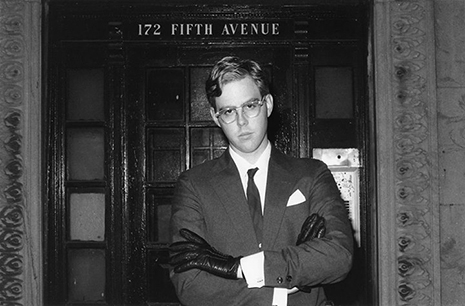
Propaganda publisher, Fred H. Berger, October 1985. (Photo by Wayne Arents)
Propaganda magazine, from the earliest issues covered punk and post-punk music as well as alternative—what could be described as “fetish”—fashion. You witnessed and reported on what became the birth of “goth” as we know it today, back when it might have fallen under the umbrella of “post-punk” or “new romantic” or “death rock.” At what point do you think disparate forms of music, literature, art, and fashion came together to form “goth”?
Fred H. Berger: I discovered goth when I saw Bauhaus in the vampire film The Hunger in 1983. For the two years prior to that, Propaganda was a hardcore punk fanzine. Propaganda’s first gothic issue was Issue No. 3, Summer 1984. It wasn’t called “goth” then – it was just “underground” or “darkwave.” I don’t think the term “goth” came into wide usage until later in 1984, and it applied to bands like Bauhaus, Sisters of Mercy, and Siouxsie and the Banshees. Although Andrew Eldritch of The Sisters of Mercy said, “We are not a goth band,” and Siouxsie said, “There’s no such thing as goth.” I don’t think they wanted to be labeled, preferring to be whatever they wanted to be, which I can fully understand. In the ‘80s Propaganda covered the New York underground club scene, which featured mostly European bands – primarily British but also Dutch and German such as Clan of Xymox and Xmal Deutschland which were darkwave – not goth. And New York’s underground clubs such as Danceteria, the Cat Club and The World featured more fashion shows and performance art than bands, and much of that was of the fetish and avant-garde variety. Sure it was experimental, kinky and dark, but it wasn’t really goth in that vampiric and melodramatic sort of way. American goth grew more out of West Coast death rock with bands like Christian Death and London After Midnight. I didn’t come in contact with that until 1989, at which time the New York alternative scene was fragmenting with more people getting involved in the rave and clubkid scenes which I had absolutely no interest in. I was somewhat aware of what was happening in L.A. and headed west to see what it was all about. And that was when Propaganda became immersed in what you would call “goth” in the truest sense of the word – ankhs and rosaries, black lace and velvet, capes and corsetry – it was like a scene out of a Vampire Lestat novel. And it was all about bands, versus New York’s preoccupation with art and fashion. The biggest L.A. goth club was Helter Skelter, and in San Diego it was Soil, and in San Francisco it was House of Usher. By 1992 I’d been to all of them and saw that there was a distinctly California style of goth as opposed to New York’s more avant-garde and fetishistic variety and London’s Batcave scene which was heavily influenced by punk. Propaganda covered the West Coast scene so extensively that by the mid-‘90s the whole country adopted it as the quintessentially American version of goth.

Issues one through five of Propaganda, charting the transition of coverage from punk to what would become “goth.”
As “gothic culture” developed, how much credit would you take for creating the feedback loop that codified the tenets of that culture? Obviously you were reporting on your own personal interests. How much of that reporting became reflected back in terms of narrowing the definitions of what it meant to be a “goth?”
FHB: Propaganda reported on the punk, goth and industrial movements in a selective way according to my own personal tastes and interests, and I also introduced certain elements based on that subjective criteria. David Bowie and ‘70s glitter rock introduced me to androgyny, and that is something which I focused on throughout most of Propaganda’s 20-year existence. The ideal which I sought out, and also fabricated to some extent, was that of a gender-ambiguous, painfully thin and ghostly pale creature based on Ziggy Stardust, but of a darker, more sinister persuasion. That darkness would be rooting in certain taboos, such as vampirism, demonism, fetishism, homosexuality and Nazism – things that would shake up mainstream society. But it was more about the aesthetics of evil (“forbidden fruit” if you like) rather than the actual practice of it. I thought evil had a sensual and stylistic edge over virtue, but I’ve personally always lived by the Golden Rule of “do unto others as you would have them do unto you.” Propaganda never advocated Satanism, occultism, Nazism, sadomasochism or homosexuality, but that didn’t stop some people from making accusations to that effect. Being an aesthete, I see things from a stylistic standpoint, but people who aren’t often read a lot of political and philosophical meaning into the imagery. I proclaim my innocence with regard to any agenda other than art, but there were some who never accepted my “artistic license” defense. Even so, Propaganda was the biggest, most popular and most influential goth-industrial-postpunk publication in the United States throughout the ‘80s and ‘90s. It was carried by all the mainstream retail chains and was reviewed in mainstream newspapers and magazines. Sure a few people were offended, and were very vocal about it, but for the most part Propaganda was seen as iconoclastic and artistic, and not directly associated with any of the maligned “isms” which it referenced for dramatic effect.
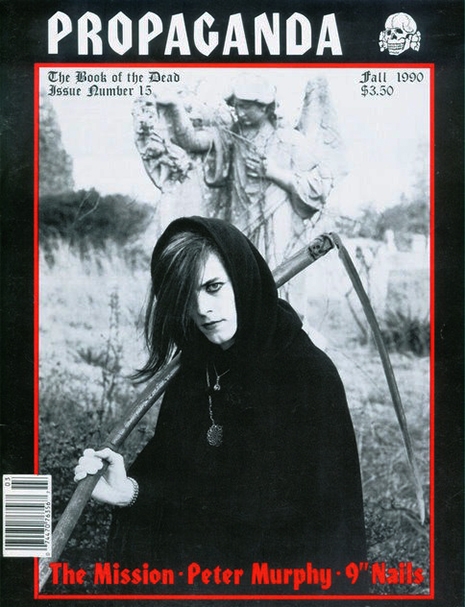
Propaganda Issue No. 15
The idea of one person’s aesthetic being the launching point for what becomes a cultural uniform is fascinating to me. I’m reminded of Judas Priest’s Rob Halford, whose personal style was basically lifted from The Leatherman’s Handbook—and that style becomes copied by legions of adoring (mostly straight) fans, and eventually ends up being the “uniform” for heavy metal in the ‘80s. Is it fair to say that your personal aesthetic, which was reflected on the pages of Propaganda in your photography, became a “uniform” for kids who were attracted to the music, art, and literature covered in the magazine?
FHB: Well, “my” personal aesthetic was composed of an amalgam of different influences, which can probably be described in cinematic terms as a confluence of The Night Porter (1974), The Road Warrior (1982), and The Hunger (1983). I never intended to determine what the “uniform” should be; I was only shooting what I liked and it just caught on. Nor was I really conscious of the fact that my work was having that much of an effect on the goth-industrial look, but occasionally people would tell me “you created the goth look” or “Propaganda set the style.” But more often than not those comments fell on deaf ears because I’ve always been somewhat oblivious to accolades (and criticism), being more introspective than reactive. But when the mainstream press started to give me credit for practically founding the goth movement I decided to change direction and opted for an increasingly queer and fetishized heroin chic sensibility. That happened in the mid-‘90s and remained Propaganda’s basic aesthetic until the termination of the magazine in 2003 and the website in 2005. I continued to work in the queer and fetish publishing fields until 2012, but stopped when I finally realized that everyone is a photographer and a writer now courtesy of this 24/7 wired world of blogs and social networking and file sharing where all intellectual properties are considered public domain and no one wants to pay for anything anymore.

Propaganda Issue No. 11.
Propaganda seemed ubiquitous in the late ‘80s and early ‘90s. The magazine had an incredible distribution for being geared to a very specific, relatively small subculture. How were you able to achieve that sort of wide reach? And how much of your buying audience do you suspect were cultural voyeurs?
FHB: Propaganda was born into the zine revolution of the early ‘80s, when all you needed was a few hundred dollars to start a magazine. The first issue had a print-run of only 300 copies, but in the ‘90s Propaganda’s press runs averaged about 22,000 copies. That doesn’t sound like much, but the magazine had amazing distribution - it seemed to be everywhere that it needed to be - hip college towns and urban centers, affluent suburbs and even isolated rural pockets of alienated youth. And my distributors told me that Propaganda had an unusually high percentage of sales – typically 80 to 90% per issue which was about double the average for other youth-oriented music and lifestyle magazines. Propaganda had a very strong cult following, and many fans preserved their copies in plastic sleeves and still have them to this day, and they often refer to them as “holy relics.” This cult status also applied to the Propaganda videozines, 10,000 of which were sold from the early ‘90s to early 2000s. And the buzz around all of this was accentuated by numerous release parties at the country’s leading goth-industrial clubs which collectively gave the impression of Propaganda being this massive multi-media enterprise. Propaganda’s heavily trafficked website and foreign expansion enhanced its image that much more. But contrary to appearances, it was all produced on a shoe-string budget with a small part-time staff and a workaholic editor-in-chief (yours truly) operating out of a 1-bedroom apartment. As for voyeurs, I really can’t say – the only one I can identify for sure is myself.
The photos in Propaganda are, if I may apply an overused term, iconic—some of these images are forever etched into my mind. You had a very clear aesthetic and a sharp eye. What were your influences as a photographer?
FHB: During it’s twenty years in print, Propaganda had about fifteen contributing photographers, as well as stock houses, movie studios and record labels that provided us with images, but I still managed to take about 1/3 of the photos that appeared in the magazine. About half of my photography was purely journalistic, covering musical performances, fashion shows and the club scene. The other half was a body of work which I created using models, some of whom became what people called “Propaganda super models” – John Koviak, Wayne Arents and Scott Crawford for instance became household names. Most of my top models were male androgynes – which was my aesthetic ideal, and they had thousands of male and female fans. In fact some straight guys accused me of turning them gay because they were so incredibly beautiful. Part of that was the models themselves, who were in their late teens to early 20s and were naturally very attractive; the other part was my styling and art direction. Some of my models were such chameleons that people often did not recognize them from one shoot to the next. I even had a couple of female models who posed as boys and no one detected the ruse. But only one of my female models achieved super model status – Tia Giles. She and my best male models appeared in numerous photo shoots in the magazine, and also acted in the Propaganda videozines which featured my art films as well as music videos provided by various bands. Many of my influences were literary, with the most inspiration coming from gothic horror authors Anne Rice and Poppy Z. Brite as well as queer counterculture authors Jean Genet and Yukio Mishima. But there were also historical figures and events that inspired my Propaganda photography and filmmaking such as Joan of Arc and Countess Elizabeth Bathory, the Holy Inquisition and the Holocaust.
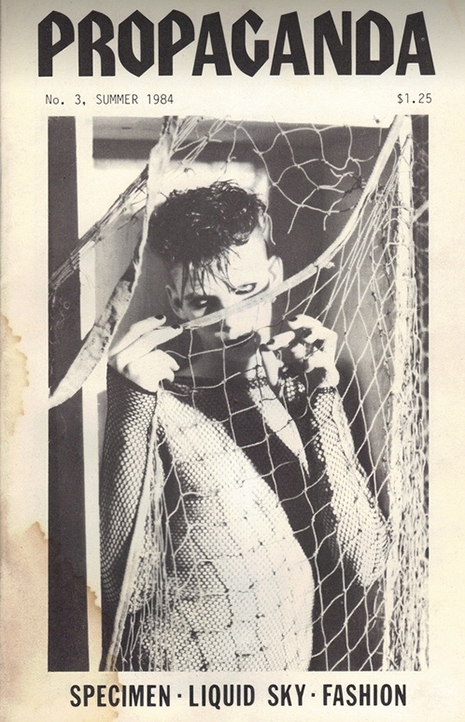
Propaganda Issue No. 3
I remember watching SNL when Goth Talk was a recurring skit, and in one episode they aired a parody video featuring Rob Lowe—and I remember thinking AT THE TIME, “this is totally ripping on Propaganda‘s videos,” and wondering what the people behind the magazine thought of that. Have you seen the skit I’m talking about?
FHB: I remember Rob Lowe in Goth Talk and I thought it was painfully hilarious. Although I don’t remember thinking it resembled any footage I had shot. My films dealt with witch burnings, war crimes, lesbian vampires, and human sacrifice. You may have noticed a similarity to one of the band videos, but I did not produce those – they were submitted by the bands for inclusion in Propaganda videozine.

Rob Lowe as “The Beholder” alongside Azrael Abyss and Circy Nightshade on SNL’s “Goth Talk.”
As a lifer, what do you think of the shift in gothic culture away from the original “death rock” aesthetic to the more “techno-goth” style—musically, and fashion-wise—I’m talking the shift from black lace and corsets to synth dreads and steampunk goggles. Furthermore, how do you feel about Post-Irony Age events like “Bats Day” at Disneyland or gothic cruises?
FHB: Well, I’m not “a lifer,” in fact I never was a “goth.” My appearance, my home décor, nothing about me comes across as goth. Upon first meeting me, people from the scene often expressed surprise at how non-goth I was. I come across as a pragmatic photojournalist – very businesslike. Actually, referring to my relatively bland persona and lifestyle, one of the Propaganda staff members said, “You are the least likely and least worthy person to be in charge of the country’s #1 goth magazine.” Yes, everyone called it a “goth magazine,” but in reality over it’s 20-year run it was about 10% punk, 15% darkwave, 30% goth, 15% industrial, 5% glam, 5% metal, 10% fetish, and 10% queercore – more or less in that chronological order from 1982 to 2002, although there was considerable overlap between genres. Moreover, after terminating Propaganda I became a freelance writer and photographer for a number of gay, fetish and transgender publications for the next ten years. In November 2013 I launched the Propaganda magazine Facebook page which has thus far acquired over 21,000 followers, but I don’t plan on maintaining it past the end of this year due to the rising cost of Facebook fees which commercial and promotional pages have to pay to reach their fans and customers. As for the shift in gothic sensibilities, I’ve seen the dark rock phenomenon go from Alice Cooper to Christian Death to Marilyn Manson and Black Veil Brides, and there has been a common thread of melancholy, melodrama and men in makeup, with just a hint of irony. And from the Blade movie franchise and the Hot Topic boutique chain to Disneyland and gothic cruises, there have always been attempts to corporatize and trivialize it. I’m not a purist, and I’m certainly no one to pass judgment on anyone else, but it seems to me that the more things change the more they stay the same.
The final question is simply, what’s next for Fred Berger and Propaganda?
FHB: Well, the Propaganda magazine Facebook page has allowed me to pay the bills over the past 18 months via the sale of Propaganda’s back inventory of magazines, VHS videos, calendars, and T-shirts, as well as various publications that feature my photography and writing. But that inventory will probably be exhausted this Fall at which time it won’t pay to maintain the page. Because Facebook charges commercial and promotional pages to reach their fans and customers, they need to sell something just to pay the fees. So when I have nothing left to sell, it will no longer be feasible to maintain Propaganda’s presence on Facebook. Although recently I have been contacted by a couple of companies that want to market Propaganda T-shirts and re-release the Propaganda videos, which is a promising prospect. I’m also starting to develop a Propaganda magazine page on Tumblr which thus far doesn’t charge any of its users. The other advantage of Tumblr is it doesn’t censor erotic imagery. So we’ll see how these things develop. But in retrospect I feel as if I’ve done everything and gone everywhere I ever wanted to, and whenever people suggest that I do this or that, I simply tell them, “been there, done that.” I’m quite content to leave my legacy just the way it is.
And what a deliciously dark legacy it is. Back issues of Propaganda are available directly from Fred Berger via the Propaganda Facebook page. Below is a selection of Berger’s work for the magazine:

Issue No. 13, “The Doomsday Issue.” Model: John Koviak (Photo by Fred H. Berger)

Propaganda poster-boy Wayne and ghoul-friend Lori. (Photo by Fred H. Berger, 1986)

From the article “From Lilith To Lestat” in Propaganda Issue No. 17. Model: Scott Crawford (Photo by Fred H. Berger 1991)

“The Palace Waif” centerfold feature in Propaganda Issue No. 21. (Photo by Fred H. Berger, 1993)
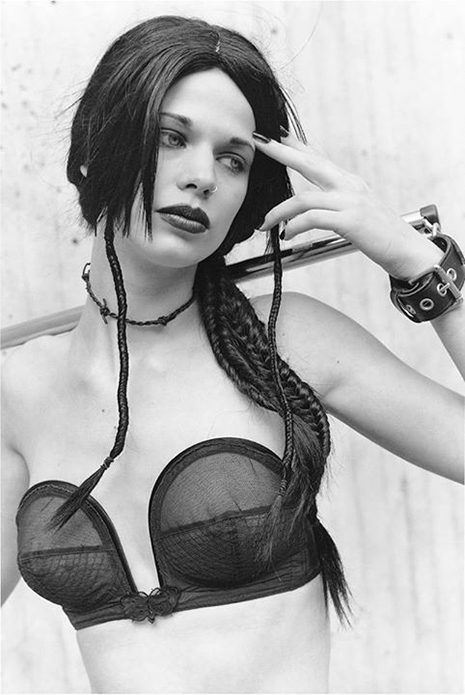
DuBois in bondage. Inspired by Poppy Z. Brite’s novel The Lazarus Heart. Appeared in Propaganda Issue No. 26. (Photo by Fred H. Berger, 2000)
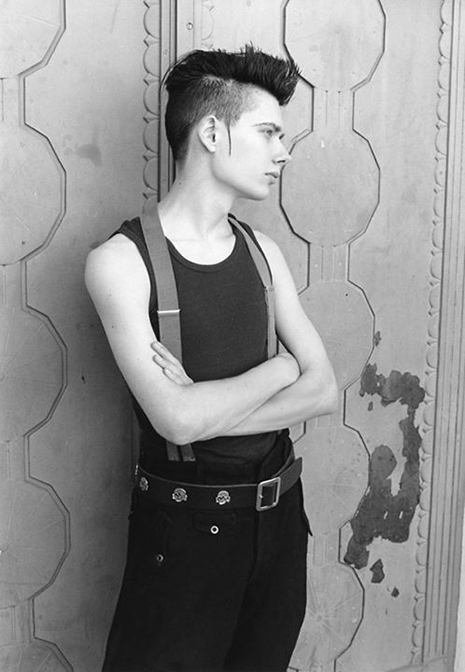
Unpublished photo of Propaganda super model John Koviak in his industrial best. (Photo by Fred H. Berger, 1991)
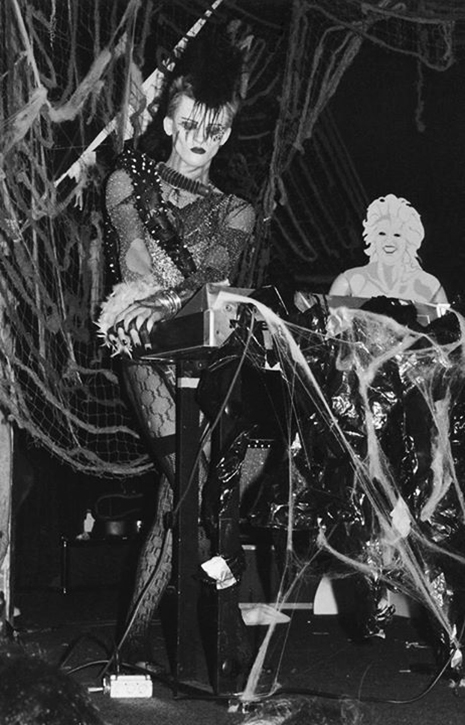
Jonny Slut performs with The Specimen at the Ritz in New York on Jan. 7, 1984. (Photo by Fred H. Berger)
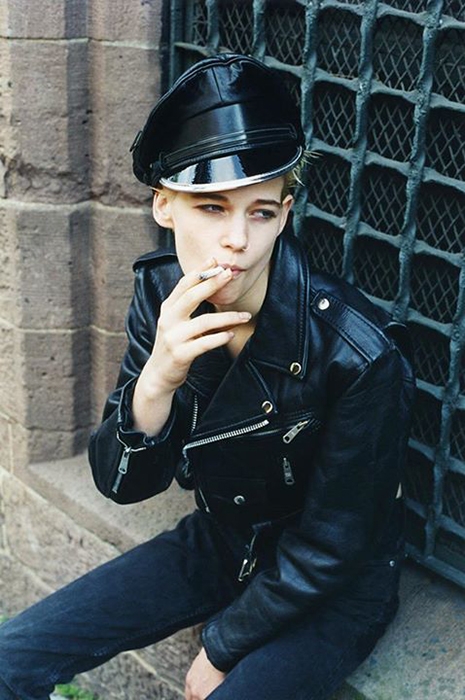
“Dmitri had three loves – Deutsche Marks, Depeche Mode and his stripper girlfriend Zosia, not necessarily in that order.” (Photo by Fred H. Berger, 1998)

Helter Skelter regulars, the Johnson twins. Hollywood, circa 1990. (Photo by Fred H. Berger)

She’s in Parties. Location: East Village, NYC. (Photo by Fred H. Berger, 1984)

This photo appeared on the cover of Propaganda Issue No. 4. New York’s aging industrial infrastructure provided the backdrop for many a Propaganda photo shoot. (Photo by Fred H. Berger, 1984)

Johnny Fright of London After Midnight. (Photo by Fred H. Berger, 1989)
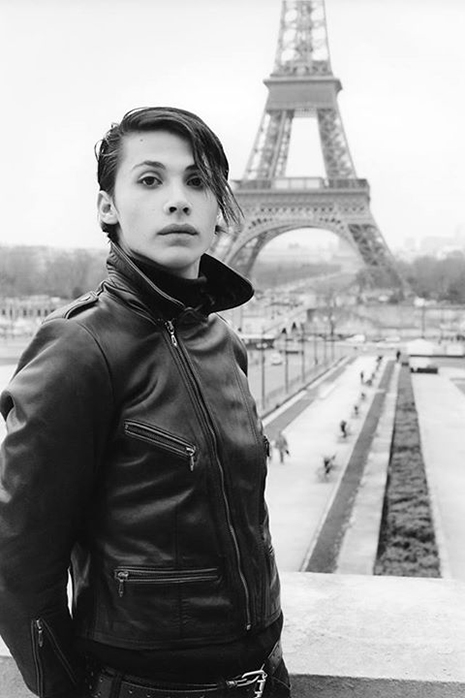
(Photo by Fred H. Berger, 2001)

Issue No. 17, “Feast of Blood.” Model: Scott Crawford (Photo by Fred H. Berger)
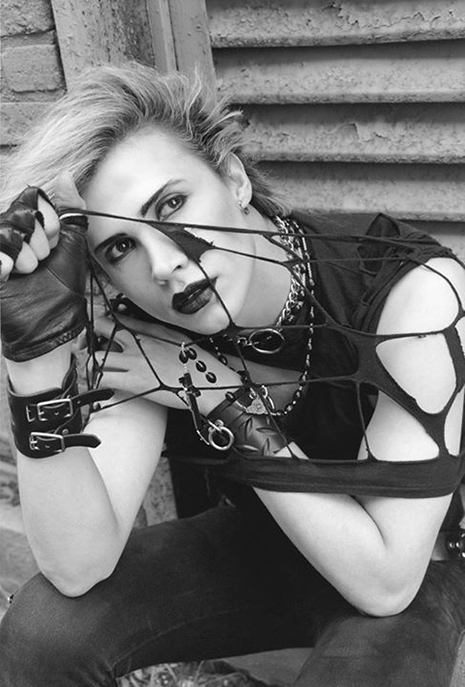
(Photo by Fred H. Berger)
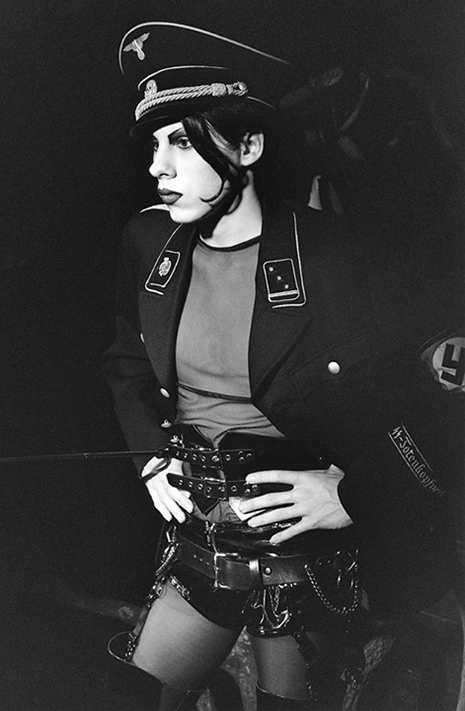
Inspired by Liliana Cavani’s 1974 cult film The Night Porter, Propaganda super-waif Christophe is decked out in Death’s Head drag. (Photo by Fred H. Berger, 1997)
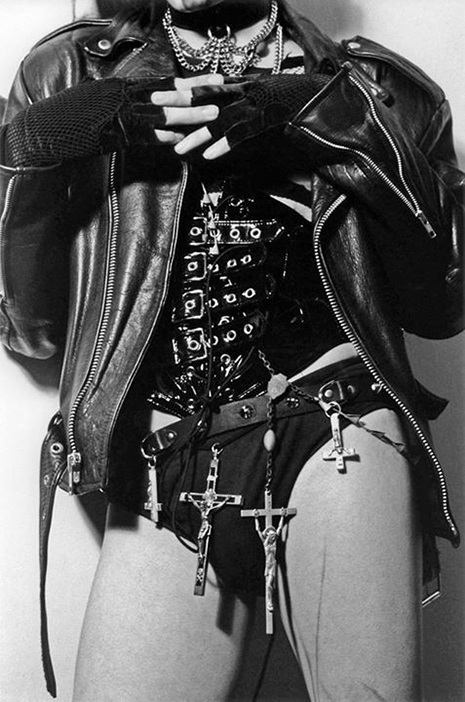
MARTYR’S DAY. (Photo by Fred H. Berger)

John Koviak of London After Midnight strikes a pious pose. Born in Poland and raised in Southern California, he was Propaganda’s #1 supermodel. This photo appears in Propaganda Issue No. 15. (Photo by Fred H. Berger, 1990)
Below, watch an except from the second Propaganda Video Zine:
Previously on Dangerous Minds:
Here’s your new favorite ‘80s Hungarian goth band
‘80s ‘sicko, freako’ goth band hilariously hardtrolls this kooky conservative TV host